Alex Watts's Blog, page 5
December 30, 2013
Smoked Haddock Pie Cooked In A Wood Stove
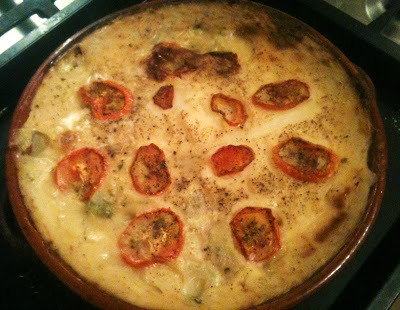
One of my favourite bits in Breaking Bad is when Walt White is smuggled away by Saul’s guy, who specialises in creating new identities for people who have worn out their own, to live the rest of his life in the coldest, remotest cabin in New Hampshire.
As the man said, no phone, no internet, no television. He had a wood stove, a month’s worth of tinned food and a winter’s worth of snow. The fixer shows him round the cabin, then points at the log-burning stove and says: “You can cook in there as well.”
It hit a note with me. The getting back to basics thing. Rediscovery of the ancient skills of cooking over wood. I’ve got a wood stove in the cottage I live in, and although I can’t pretend it’s as cold as Walt’s cabin, I bet it runs a close second.
In fact, as I have no TV either, one of my main pleasures is warming my toes in front of the fire, with a whisky in my hand, while watching the flames licking away at the wood (Caveman TV, if you will). Then I make another foray into the darkness of the slowworm-infested garden and reach for the logs and frozen snakes to keep the happy hearth belching its wonderful rays of pale warm.
I sleep in front of the stove some nights, and wake to find cold ash where warmth once lay, and a crick in my neck and cold-numb head from frozen cider. Over the months, I’ve become quite an expert at the fire-burning qualities of beech or oak, and lighting techniques and how many bricks to put in there to retain the heat, and how much to turn the air-inflow knobs to get the embers toasty, without burning through my log collection before the once-a-month supply drop from Saul’s guy, and when to risk a log from the apple tree that died this summer and hasn’t had time to dry.
But one thing I haven’t really tried is cooking in there. My first experience was roasting a fine piece of beef with disastrous results. And I’ll say no more than that. Aside from that, I’ve cooked in a wood-burning pizza oven a friend made. He’d made the thing out of special cement and fire bricks, designed at such an angle that the smoke was kept a few inches off the dough, and so strong a heat that a pizza took barely three minutes. The method was simple enough - just burn a load of logs and once they were embers sweep them into the far corner, and then put the pizza on the red-hot bricks.
I’m trying the same in my stove as I write, burning down five or six sizeable apple and beech logs until they’re reduced to orange coals, and then cooking the smoked haddock pie I’d made earlier.
I was going to cook it in the oven, and heaven knows now it would have been a lot quicker, but I suddenly had a moment of inspiration and thought about Walt’s stove for some reason. And I must admit there’s a lot more skill to this than I first thought. You can’t just buy an RV and drive into the desert, and say: “Let’s cook.” There’s a skill to cooking on a wood stove. This ain’t chemistry - this is art, as they say.
As I sit here writing, I can hear the faint sizzle of roasting pie, but only the faintest, and it’s already been in there an hour. I’ve raked up the embers but now I can barely hear a thing. I’ll check again.

I’ve got to say, it’s a bit of a disaster. The tomatoes on top are barely singed and although the mashed potato top is warmer than it was in the fridge, it barely counts for cooked.
I’ve given the ashes another rake, but next time I’ll definitely start with hotter embers. I could put a couple of small logs on now, and hope they catch, but even if they do they’ll produce flame - which I’m told is not what you want when cooking over wood otherwise the whole thing will just taste of smoke.
Of course, If I’d cooked the fish first I’d probably just eat it now, hungry as I am. But I put the pieces in raw, which is always the best thing to do with a fish pie, so I’m afraid that by digging in, all I’ll find is escabeche.
I’ll give it another five minutes and if the embers haven’t worked their magic by then, I’ll warm up the oven and go back to traditional means...
So anyway back to the pie, which is originally what I was supposed to be writing about, until I got side-tracked by the stupid idea of cooking in the wood stove.
I worked in a small-windowed kitchen above a deli for a year or so, making the sort of wages that a modern day slave would be proud of, and I can’t tell you how many fish pies I prepped. People used to bring their own dishes in so they could pass them off on their own.
It was a dreadful recipe - lovely if you like that sort of thing I suppose, but dreadful if you’re cooking it. And far too rich for me. I’d fillet a huge cod delivered by a racist from Billingsgate Market, then cook a white sauce with onions, white wine and buckets of cream, and then throw in prawns the size of a baby’s fist and chunks of smoked haddock. Then top it all with mashed potato that contained a few blocks of butter and more cream. Then I’d decorate it with grated Davidstow cheddar.
The owner said he followed the Italian school of thought when it comes to fish and cheese and said they should never be served together, but he made an exception for that fish pie. It was rich, creamy and dreary.
This is the exact opposite of that recipe. I suppose once upon a time you could have quite rightly, and without a shade of hypocrisy, called it pauper’s smoked fish pie, but what with the price of fish these days...
What I really mean is, it’s simple, Simple in the extreme. Just the most basic flavours lovingly put together to make that most wonderful of comfort foods - a rip-roaring, bubbling fish pie straight from the oven - or at least it would have been if I hadn’t buggered up the stove.
I’m going to check again. A faint sizzle. I’d be better off holding it over a cigarette. There’s one ember left, and the pie could be described as warm at best.
There’s nothing for it, but to put the oven on, and finish it off using lovely Russian gas. But if you’ve got better wood-burning skills than me, and if you’ve ever lit a fire properly, then no doubt you’ll have better luck.
SMOKED HADDOCK PIE(Serves 2 with seconds)
4 large potatoes300g smoked haddock2 medium onions2 garlic clovesSalt, PepperLarge knob of butter3 level dessertspoons of flourMilk1 tomatoI tbsp chopped parsley1 teaspoon mustard
Peel the potatoes, dice, and boil in a saucepan for 20 minutes or so until cooked. Then mash while hot with a bit of the potato water and a splash of milk.
Meanwhile, chop the onions and garlic finely. Melt the butter in a pan and gently fry the onions and garlic for about five minutes until they are soft. Add the flour, and over a low flame, stir for a minute until the mixture has become a paste.
Then add a ladle of the boiling water from the potatoes, mix well, then add another ladle until the mixture has loosened. Then add half a pint or so of milk, a little at a time, stirring all the time, until you have a fairly thick custard consistency.
Add the mustard, and salt and pepper to taste. Remember to slightly underseason it with salt as the salt from the smoked haddock will also add flavour. Turn the heat off and add the peas and the broad beans. Then chop up the parsley and add to the sauce.
Skin the haddock fillet, running a sharp filleting knife from the tail to the top, at a slight angle to the board, and slice the fish into one inch or so pieces. Get a pie dish - about 10 inches across or so - and fill with the sauce. Decorate the sauce evenly with the smoked haddock pieces. Then top with the mashed potato. Slice the tomato and decorate the top, then sprinkle with pepper.
Put in the wood stove for an indeterminable amount of time, or cook for 40 minutes in an oven at 180C.
Published on December 30, 2013 16:53
December 15, 2013
Parsley Soup: An Indubitable Hangover Cure
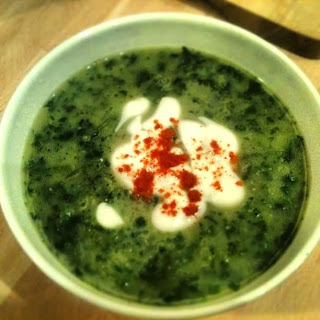
Don’t ask me why, but I find this soup makes a great hangover cure. Perhaps it’s because I associate it with the time I lived in London and would restore my flagging spirits and woollen head when I eventually rose on a Sunday afternoon, all a quiver with shakes and punched kidneys, and a liver a French farmer would be proud of, a dreadful thirst for milk, and vague recollections of the night before and the night before that, and disturbingly-vivid dreams of being captured by cannibals, and shrunken heads, and then I would wander out, and as the pub singer goes have a beer for breakfast and one more for dessert, and then head down to a pie and mash shop in Peckham, and fill myself with mashed potato.
Not the hideously-rich, sauce-like pomme puree stuff Marco Pierre White and a young, podgy Gordon Ramsay would knock out in those Harveys days, with the steaming potatoes straight into the Robot with a hod’s worth of butter and hot milk, and whizzed and topped up with more milk until it came out like pale custard.
But simple mashed spuds with just a suggestion of margarine and a cup of the river water they were cooked in. And soon, but never quite soon enough, everything would be alright with the world, and then I’d have that awful, kick-in-the-stomach start that tomorrow was Monday and I’d have to be somewhere dreadful like Hastings, with a notebook in my hand, braving the sneers and gob from the fag chuffers outside the magistrates’ court.
But it wasn’t the mashed potatoes and the dreadfully cheap and mean, but strangely acceptable Sweeney Todd pies, but the sauce, or liquor, that accompanied them. Made from, or at least claimed to have been made from, the Thames water that the eels were boiled in, with onions and pepper and bay leaves, and a garden of parsley so that there were more green specks than grey. I used to love mixing that parsley liquor with the mash and then covering the whole lot with a clattering of white pepper.
Anyway, they say food reminds you of hangovers, or vice versa. And I can positively posit that this very simple soup really does the job when it comes to banishing the evil-spirits aftermath of the morning after, when you wake feverishly with the taste of rum and lime juice in your throat, and a mint you know didn’t come from toothpaste, as you wake crumpled on the floor, the wood burner long gone out, and your face as ashen as the mound that remains of last night’s logs, and a Robben Island cold in your bones, your head rattling as though filled with dried acorns, and knowing you forgot to eat again.
And despite the hunger, there is very little you can face but parsley and potatoes, and certainly not last night’s hardly-touched kebab sealed with lamb-fat candle wax as it surely will be if the trails down your jacket are anything to go by, and then realising the pie and mash shop closed long ago, and besides you live in the country now and the nearest is a 39-mile drive.
And as you brave opening your eyes once again, and mentally scan the churlishly-empty pantry, and a dim hope ascends with bitter juice humming of rum, as you realise you’ve just about got enough ingredients to make a steaming pot of parsley soup. And an hour or so later, you’re very glad you did as you metal-scrape the last with bread, your spirits restored and last night’s bottles cleared, and a smugness that you remembered to put the bin out for once after tripping over next door’s cat, the apple missing like an England seamer, and then remember that the next day you won’t have to be in Hastings, but somewhere far, far worse.
PARSLEY SOUP(Serves 2 with seconds)
2 medium onions3 medium potatoesKnob of butter3 garlic clovesOne massive bunch of parsleyOne litre of boiling waterSalt, pepperNatural yoghurtCayenne pepper
Chop the onions and add to a saucepan with the butter, and fry over a medium flame, stirring from time to time. Peel and dice the potatoes and add to the pan. Chop the garlic and add to the pan. Fry for a few minutes until the onions have softened.
Wash the parsley well in a tub of water to ensure any grit sinks to the bottom, then slice off the stalks and chop them finely. Add to the pan and fry for another minute or so. Boil a kettle and add about one litre of water to the pan.
Simmer until the potatoes can be pierced easily with a knife - about 15 minutes, depending on the flame and type of potatoes and what altitude you’re cooking at, and other immeasurables.
Chop the rest of the parsley and put in the pot and simmer for a minute, then blitz in a liquidiser or use one of those blender sticks, or just attack the soup with a potato masher. Season to taste with salt and pepper. It goes very well with a dollop of yoghurt and a generous dusting of cayenne pepper, if your stomach can handle it.
Published on December 15, 2013 09:47
November 18, 2013
Pilchard Curry And Other Student Stories
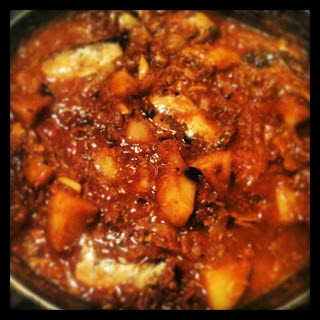
Times were hard when I was a student. Not like today. We enjoyed unheard of things like housing benefit and free tuition fees in those pre-Clegg nut times, but they were still hard. And, of course, any money you managed to save on optional extras like food and heating meant the more you could splash out on subsidised booze - in my case strong lager with vodka, lime and soda “greenies”.
One way to do this was to make a communal pot of tinned tuna curry most nights - which was absolutely delicious, if a little repetitive. But not repetitive enough obviously for one of the blokes who shared our house. I shared a flat with him briefly 20 years later, and he still made tuna curry every night when he got home from work. He was a strange chap, but they say the habits you learn at university stay with you the rest of your life.
Anyway, this recipe is based on that tuna curry recipe slightly, but I’ve tinkered with it over the years. I got ideas from an Indian friend whose mother used to make delicious curries and claimed the best ones were made from tinned pilchards.
It’s also got influences from a dish that I got addicted to while living in Cambodia - char trey cor compong (fried tinned fish) - the recipe is here if you want to try it . So this is a hybrid of Brightonian, Indian and Cambodian cooking, and it really is worth trying especially if you’re counting the pennies, or just want something spicy and healthy to see you through these dark, cold nights.
It uses curry leaves, and I find the best thing to do with these is to buy a big bag of fresh ones from an Asian supermarket and then freeze them and use a handful as you will - they defrost in seconds in a hot pan. The dried ones aren’t worth bothering with. Anyway, I hope you like it...
PILCHARD CURRY(Serves 2)
2 large onions2 medium potatoesKnob of butter6 garlic cloves12 curry leaves2 cups of water or more1/2 tsp cumin seeds1 tsp garam masala1 tsp turmeric2 tsps of extra hot chilli powder 1 tbsp tomato puree2 x 155g tins of pilchards in tomato sauce4 level tsps fish sauce1 level tsp sugar1 red chilli
Chop the onions fairly finely, then peel the potatoes and cut each one into eight cubes. Melt the butter in a frying pan and add the onions and brown slightly for a few minutes, stirring all the time. Then add the potatoes and stir well.
Fry for another five minutes over a low heat, stirring from time to time. Then finely dice the garlic and add to the pan with the curry leaves. Fry for a couple of minutes, then add the cumin seeds, garam masala, turmeric and chilli powder. Fry for a couple of minutes, stirring all the time to stop the mixture sticking to the bottom and burning.
Add a cup of water and the tomato puree and stir well. Allow to simmer gently over a low heat, stirring from time to time, and adding another splash or two of water as the liquid evaporates - remember this is a fairly dry curry, so don’t swamp it.
Continue cooking for another 20 minutes or so, then test one of the potato chunks to see if they’re cooked. If not, add more splashes of water and continue cooking until they’re done. Add fish sauce and sugar and stir well.
Then add the first tin of pilchards, including the juice, and mash slightly with a spoon. Stir well and simmer for a minute, then add the second tin, but this time just break the fish in half and stir gently to ensure they don’t break up. Add a little water to each tin to get the remaining juices out. Simmer gently for another minute until the second tin of pilchards is just warmed through, then serve with sliced fresh chillies and sticky rice.
Published on November 18, 2013 11:45
November 17, 2013
Pork Carnitas: The Quick Way (Put That On Your Tacometer)

There are many recipes for this classic Mexican pork snack - usually involving great hunks of pig that are cooked for hours until they can be pulled apart with blunt spoons.
Here is a much quicker version I was given by a man I met in a lift in San Jose in Costa Rica. He swears by it and so do I.
You nestle a spoonful or two of the greasy, fragrant pork in a warmed tortilla, and then roll it up. I like them on their own, but add whatever to the taco - guacamole, sour cream, grated cheese, lettuce, chopped tomatoes, salsa, jalapenos, refried beans et al.
What’s important is getting the pork bit right, without burning up half the North Sea's gas - unless you like throwing your money to the profit-chasing, rip-off Big Six energy cartel. Here goes...
PORK CARNITAS (Serves 2)
350g pork shoulder steaks4 large garlic cloves2 cups or more of water1 tsp cumin seeds2 tsps oregano leavesSalt, pepper
Slice the pork into short, thin strips, about a centimetre wide. Don’t trim the fat as this adds to the flavour and you don’t use any other oil in the recipe. Put a frying pan over a medium heat and when hot, throw in the pork and allow to brown slightly before giving it a stir.
The fat (and water injected into the pork if it is supermarket-bought) should lubricate the pan to stop it catching when you give it a stir. If not, add a knob of lard or beef dripping or something. Continue browning for a few minutes, and then throw in a pinch or two of salt and pepper, and the cumin seeds.
Keep stirring and browning the pork. Then finely chop the garlic and add to the pan and brown the pork for another few minutes (notice how many times I'm irritatingly using the word 'brown' - that's what the whole recipe's about). It should be evenly browned by the end (and once more). Then add a cup of water. Don’t completely submerge the pork - there should be bits sticking out.
Stir well and allow this to bubble away until it is reduced to a syrup. Then add another cup of water and stir occasionally until it is reduced. Keep repeating the process until the pork has been cooking for about an hour. Five minutes from the end, chop the oregano leaves and add to the pan.
When the pork has been cooking for an hour, test a piece - it should be soft and not at all chewy. Boil away the last of the liquid until the pork is coated in a glossy syrup.
Remove the pork and then clean out the pan with a piece of bread. Put the pan back on the heat and warm the tortillas in it, turning from time to time. Put a spoon or two of pork in the middle of the tortilla, top with lettuce, salsa sauce, grated cheese, chilli peppers etc and roll up and eat with your fingers, like you're Tuco Salamanca in Breaking Bad (who, fittingly, the bloke in the lift reminded me of in some ways).
Published on November 17, 2013 14:25
November 12, 2013
Chicken And Black Bean Stew
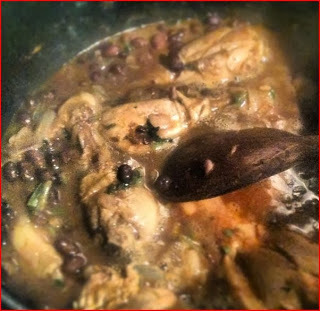
I’ve been getting into South American and Mexican food lately after re-reading
the beautifully-photographed World Food Cafe recipe book and authors Chris and
Carolyn Caldicott’s travels through the orange-sunset Americas.
As I sit here, barely able to type with frozen
hands, and the woodburning stove behind me spluttering the last log, filling me
with Withnail-ian thoughts of burning the furniture, despite what little there
is in my ramshackle cottage, I can’t think of a place I’d rather be than
Brazil.
This recipe is a take on the South American
country’s traditional black bean stew. Normally, you’d add a few vegetables
like cubes of carrots, sweet potatoes and turnips or something, and in the
Caldicotts’ book, no meat. But this is all I had in the cupboard, and as it
turned out pretty well and kept the cold at bay for an hour or two, especially
with the high chilli content, I thought I’d share it with you...
CHICKEN
AND BLACK BEAN STEW
(serves
2)
6
chicken drumsticks
2
small onions
4
fat cloves of garlic
1
tbsp beef dripping
2
teaspoons cumin seeds
2
teaspoons extra hot chilli powder
2
handfuls of fresh coriander
Salt
400g
tin of black turtle beans
Melt the dripping in a pot and fry the drumsticks
on all sides until lightly browned. Roughly chop the onions and garlic cloves
and add them to the pot, stirring away over a medium flame for a couple of
minutes. Add the cumin seeds and continue to fry for another minute or so.
Add half a cup of water and cook away, turning the
chicken from time to time, until the water has evaporated into a thick syrup,
then add another half cup of water and the chilli powder.
Put the coriander in a tub of water and wash well,
then leave in the water so any mud sinks to the bottom of the tub (there is
nothing worse than grit in a stew). Cut or twist off the roots and leave the
leaves in the water. Roughly chop the roots and add them to the pot and cook
for another ten minutes, adding a little more water if necessary.
Add the turtle beans (including the purple liquid the
beans come with) and stir for a minute until thoroughly coated. Cook over a low
heat for another five minutes, stirring from time to time, and at the end add
salt to taste and stir in the chopped coriander leaves.
Serve with warm tortillas (which you can heat
either by putting them on top of the woodburning stove, or by turning them a
couple of times in a dry frying pan, or pinging them for 30 seconds in a
microwave if you’ve got one).
Published on November 12, 2013 11:57
November 11, 2013
Fakirs' Smoked Mackerel Pate
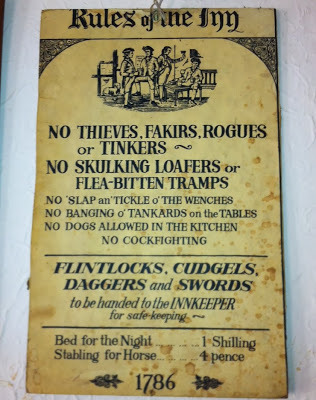
I can’t claim this recipe for my own, even though
I’d like to, and you’d probably never know any different. But it would feel
wrong. Because the chef who lays claim to this wonderfully-simple dish deserves
much wider praise.
He’s one of those proper cooks who lies undiscovered
their whole lives. A small celebrity in a tiny brook who brightens the lives of
the many who head to his harbourside haunt in the West Country.
Whether it’s for rib of beef on Sunday, or fish
the rest of the week. Whole brill with elderberries, slabs of smoked haddock,
or grilled hake in green tomato sauce. Flounders and plaice the size of your
plate. And if you’re lucky, and the chef’s had a fruitful trip to the harbour,
and you’ve both remembered your drunken order in the bar the night before as he
sips that wonderful taste of after-service cider, then a lobster the length of
your forearm - just poached, split lengthways, and warmed in parsley butter.
It’s the sort of place that thrives on word of mouth,
and if one word were to describe it, it would be quirky. Because from the
soused fishermen balanced precariously on stalls at the bar, planning their
next day’s attack at the bass, to the old boy who grows his own in the garage,
to the picture framer who says “I’m hanging in there” whenever anyone asks how
business is, to the glass buoys pinned to the walls, to the sign saying “no
thieves, fakirs, rogues, or tinkers, no skulking loafers, or flea-bitten tramps”,
to the mermaid with her sleep-inducing flute, to the oft-forgotten service, to
the ogre-sized portions, to the unripe plums and blueberries decorating a
dressed crab this time from a fruitless lobster search from last night’s
drunken pledge, there is no other place I prefer to eat.
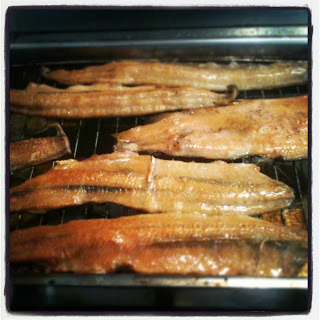
Which is why I’ve been staying there in my room above
the pub, dining on fish every night, and raising a glass to the chef after he
emerges from the stove, glowing like a horsefly on the saddle and supping like
a man who’s swallowed an ocean. Happy, content, beaming back. Fervent in the
warmth of adoration. That vicarious pleasure only a true cook understands.
I love this place and the smoker at the back where
you can take your fish to be brined in a barrel and browned over applewood
embers. Slabs of smoked mullet eaten with butter-smeared fingers, or garfish if
you don’t mind the bones and have no aversion to green ones.
But the best of the lot is the smoked mackerel pâté
the chef makes. I’ve seen it made many ways, and far more complex at times, but
that pate like all his dishes has a simplicity, a knowledge that the fish
should be left to speak for itself and not be messed around with.

Other flavours are there - horseradish, smoked
garlic, lemon and black pepper - but nothing takes away from the warming taste of
that mackerel - silver skin turned gold from the wood smoke, and still warm
from trickling embers, and then minced and left to sit and merge in ramekins overnight.
Eaten with nothing but toast, as you ponder each flavour
and reflect again on how wonderful it is to eat fish, draped in salt and smoke ,
such a magical, binding chemistry of forgotten old England as you wait for your
brill to arrive.
FAKIRS' SMOKED MACKEREL PATE
(Serves 4)
200g smoked mackerel
Lots of black pepper
Half a lemon, squeezed
5 smoked garlic cloves
4 level teaspoons horseradish sauce
Dash of Worcestershire Sauce
200ml double cream
1/2 tsp salt
Throw all the ingredients into a blender, and blitz for a minute or so until
smooth. Spoon into ramekins and leave in the fridge overnight. Dust with
paprika. Serve with triangles of toasted brown bread.
MORE: Pepsi, Smoked Fish And Green Mango Salad
Published on November 11, 2013 07:04
June 23, 2013
Heston Blumenthal Axed By Little Chef

The first sign that Heston Blumenthal’s makeover
of Little Chef had failed was in January last year when the roadside restaurant
chain announced it was closing 61 of its 161 outlets and shedding 600 staff.
No doubt the sacrificed wage slaves were delighted
to learn that the millionaire chef would remain on the payroll as a consultant
despite the mass redundancies.
But now they’ll be even more pleased to learn that
Blumenthal, 47, has been axed and all his dishes dropped from the ten eateries they
were served in.
In a
strongly-worded statement, Little Chef bosses said his dishes - such as braised
ox cheek, and serving fish and chips with a small bottle containing essence of
pickled onion so diners could replicate the “smell of the chippy” - were deeply
unpopular with customers.
The TV chef
approached the chain in 2007 and persuaded them to let him film a three-part
documentary for Channel 4 called Big Chef, Little Chef, focusing on his efforts
to revamp its restaurant on the A303 at Popham, Hampshire.
Little Chef
allowed him to change its decor and even install urinals playing recordings of
Spike Milligan reciting nonsense verse.
But Little
Chef said the experiment had not worked - and Blumenthal had “taken everything
away from its core”.
“The
problem is that no one wants his food. None of his dishes are popular,” said a
spokesman.
“We’ve dropped all his dishes from the ten restaurants where his
food was available. That’s all gone as of this week. He’s been wiped off the
menu. Little Chef needs to get back down to earth and that’s what we’re doing.”
Cue
violins...
Published on June 23, 2013 09:28
June 6, 2013
Jamie Oliver’s Twitter Account Hacked With Bogus Diet Adverts

Overweight healthy eating guru Jamie Oliver has
had his Twitter account hacked with an advert for a diet fad that claims users
can lose “23lbs of belly fat in one month”.
The celebrity cook tweeted a series of links to a bogus
woman’s health magazine advertising the weight-shedding benefits of something
called the Garcinia Cambogia bean diet.
His fans quickly noticed the hack, and minutes
later Oliver deleted the messages, which said: “Lose 22lbs. of fffat in 29
days” followed by a link.
Oliver then sent out a tweet to his 3.3 million
followers, saying: “Whoa sorry guys looks like i got hacked!! Sorry to all
looking in to it now. JOXX”
Others used the opportunity to poke fun at the TV cook , with Luke Lewis writing: “Jamie Oliver's tweets are more lucid than usual
this morning.”
An hour later, and without any apparent irony,
Oliver then sent out a Twitter message to his fans plugging a new “naughty, filthy”
chocolate cake for one of his many restaurant chains.
“Help me guys I'm Just about to put this chocolate
cake on a menu for Jamies italian & its a really painfully good naughty
filthy elegant chocolate dish what can I call it ???
“It's gotta be simple but a bit slutty any ideas ?
I want a naughty play of death by chocolate ... Chocolate ???? Any ideas
greatly appreciated and don't hold back I think it deserves to be a big rude
love #jamie xxx”.
What a waste of a golden opportunity though, as
chef Neil Rankin put it - breaking into Oliver’s Twitter account and just
posting spam.
Published on June 06, 2013 05:38
June 5, 2013
Restaurant Conman Jailed For Putting Pubic Hair In Curry
I've often found it incredible the lengths some people will go to get a free drink or meal. When I started my first job working behind a bar, I was warned about a customer who was renowned for trying to cadge free pints.
He was known all around the village where I grew up. A huge, button-eyed man with the longest eyebrows I've ever seen. He always wore a grubby tweed jacket covered in fag burns, and spoke with a wonderfully-rehearsed Woosterian accent.
On my first night, he pulled up in his invalid carriage and ordered a pint of real ale. He sniffed it, held it up to the light like a real ale enthusiast in a fisherman's jumper, then turned his back to the bar briefly and downed half the pint.
He turned back with foam on his nose and a look of absolute horror on his face, coughing and spluttering, and pointing at the now cloudy pint, and demanded another one. He pulled the stunt again, but this time I spotted him dropping in a pinch of flour from his pocket.
But it was small beer compared with the fraudster jailed today for trying to get a free curry from the Jamal Indian restaurant in Middlesbrough - by doctoring his lamb bhuna with pubic hair.
Lee Tyers, 40, from Yarm, was caught on CCTV putting his hands down his trousers as he sat in the restaurant and then garnishing his food.
He told staff he'd found the hair in his food in a bid to get out of paying his £39.55 bill.
Restaurant owner Jamal Chowdhury told the court he'd known Tyers for 18 years, but was owed £110 for unpaid meals.
The crook told staff he had cash to pay, before he and a friend ordered two lamb bhunas, pilau rice, naan bread, lager, a chapati and a shish kebab.
The pair ate most of their food, and then Tyers complained to a waiter about finding pubic hair in his bhuna. They then left the curry house without paying.
Mr Chowdhury told Teesside Magistrates' Court: "I told him all the staff have black hair and this is brown - it’s not our hair."
Tyers was found guilty of false representation and jailed for two weeks and ordered to pay £39.55 compensation.
MORE: Why You Should Never Send Back Food In A Restaurant
Published on June 05, 2013 12:42
June 3, 2013
Food Banks And What The West Could Learn From Asian Cooking
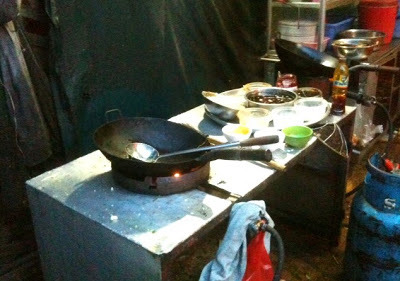
There is a lot of talk about obesity and healthy
eating in the West. There is also a lot of talk about rising food prices, food
banks, unemployment, benefits cuts and other austerity measures sparking dubious
claims from millionaire, silver-spooned Tories that they could survive on £53 a
week, while maintaining a reasonably nutritious and varied diet.
Now comes the news that a staggering 500,000
people in the UK - the seventh richest country in the world, it’s worth
remembering - are relying on food banks to survive as welfare cuts bite and food
prices continue to rise (having already soared by 35% over the past five years,
far outstripping wage increases).
And the way things are going, it’s only likely to
get worse. As John Harris wrote this week in The Guardian about the growing use
of food banks in Britain, there is a perception that “hunger is something that
happens only to the poor and unfortunate overseas. It’s now here: outside
everyone’s door, gnawing away, ruining lives.”
Overseas places like Cambodia , for instance, where
I am currently working. A third-world country ranked as one of the poorest in
the world, where many villagers struggle to get by on less than $2 a day.
There is no doubt that even the poorest Britons
live a much better life than the poorest Cambodians. But it makes sense that the
hundreds of thousands of Britons now struggling with “destitution, hardship,
and hunger on a large scale”, as key poverty charities warn, could learn a thing
or two from SE Asia’s most vulnerable - who for years have had to cope with
extreme hunger, and have become skilled at getting the most out of the little
food they have.
A good start would be removing the ‘meat and two
veg’ mantra and embracing an Asian diet and Asian cooking techniques - none
more so than the wok: an extremely versatile cooking pot that can be used to
fry, steam, and braise, and is very useful for serving up tasty, nutritious
food on a tight budget.
Asian cooking, in general, uses more fish and has
a higher ratio of vegetables per serving - and vegetables are often overlooked
in the meat-obsessed West as an excellent way to naturally boost flavour.
Likewise, wok cooking uses little oil, making it healthier. It’s also blindingly
quick - meaning it takes less of a chunk out of gas or electricity bills. And I
say this without sarcasm or irony in these days where you can’t switch on the
telly without hearing the word sustainability - something that may help save
the planet.
As food and fuel become more scarce, populations
grow, and climate change pushes up temperatures and leads to more flooding, making
traditional staples like rice less and less of a staple, people will be forced
to eat less meat and more vegetables, fruit, and perhaps insects - which happen
to be a very good source of protein and nourishment. It’s unavoidable - there
aren’t enough resources to go round as it is.
People in the West could do themselves a lot of
favours if they simply ate less, and saw meat as less of a main ingredient and
more of a flavouring, as it is in SE Asia. When I arrived in Cambodia in 2011,
I tipped the airport scales at a whopping and technically obese 93kg. I’m now
77kg, and feel a lot better for it.
Yes, I miss meat feasts and dirty kebabs. But after
a while your stomach and appetite changes, it takes less food to fill your
belly, and the endless discussions about double cheese burgers and monstrous
steaks leave you frankly bored, if not a little disgusted, by the gluttony so
often espoused on foodie havens like Twitter.
Read any interview with someone surviving on food
aid in the US or Europe and they will say the same thing - that they have been
forced to abandon, or heavily cut down on, meat for cheaper ingredients like
pasta, rice, noodles, pulses, cereals, and vegetables.
Over the next few blogs, I’m going to post a few
recipes I’ve picked up on my travels through SE Asia - not gourmet meals, far
from it, but delicious all the same. They are meals that can be made in minutes
and are extremely cheap to make.
It’s one of the many things people in the West could
learn from the far flung East, along with swapping toilet paper for bum guns, the
importance of families and spirituality, and being less obsessed with celebrity,
to name but a few.
The first is a dish that comes from a great Chinese-Cambodian
street food stall in Phnom Penh. It’s called char trey cor compong (fried
tinned fish). Doesn’t sound great does it, but it’s a wonderful meal. All you
need is a tin of mackerel in tomato sauce (or tinned pilchards or sardines), tomato ketchup (tuk peng pong - the Hong Kong influence in the
dish), onions, chillies, rice, and a few minutes with a wok.

CHAR
TREY COR COMPONG
(serves
2)
400g
tin of mackerel in tomato sauce
1
large or two medium onions
3
tablespoons tomato ketchup
2
spring onions
1
teaspoon fish sauce
Salt,
Pepper, Sugar
Juice
of two limes
Two
red bird eye chillies
1/2
tablespoon vegetable oil
As with all wok dishes, it’s important to prep the
ingredients first - the best cooks over here say 90% of the cooking is done on
the chopping board, and 10% in the wok. But they also say the blacker the wok,
the better the chef, so knife skills are very good by that stage.
Open the tinned mackerel, and carefully fork out
the fish and put on a plate. Half fill the tin with water, and using a wooden
spoon scrape up the tomato sauce from the sides and bottom. Chop the onion in
half, then finely slice. Cut the white part of each spring onion into two
pieces, then finely chop the green part to use as a garnish. Finely slice the
chillies and put in a small saucer or dipping bowl. Cut the limes into six
pieces, and squeeze each piece into a bowl.
Heat the wok over a high flame until the metal
begins to smoke, then add the vegetable oil. Toss in the sliced onion, and stir
continuously with the wooden spoon until the onion is soft but not browned -
this will take about two minutes. Then throw in the liquid from the tin, and
the spring onion whites, and boil for a minute.
Add the ketchup, lime juice, and fish sauce, and
boil for another 30 seconds, topping up with a little more water if necessary,
until you have a sauce about the thickness of double cream. Add salt, sugar,
and ground black pepper to taste.
Turn off the flame and put the fish in the wok,
and cover with the sauce. Put the lid on the wok and then leave for a minute. The
fish should be warmed through but not hot. Tip the fish on to a flat serving
dish and scatter with the spring onion greens (the stall uses chopped
Chinese chives as a garnish - so use those if you’re lucky enough to have them).
Serve with sticky rice and the saucer of chopped chillies.
MORE: Eating Duck Embryos And Cow Guts
:: My new, bestselling food book Down And Out In South East Asia is an adventure story, spiked with a heavy dose of backpacker noir, through the eateries, street food stalls, and hazy bars of Cambodia, Thailand, and Vietnam.
Published on June 03, 2013 16:10



